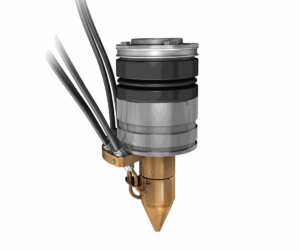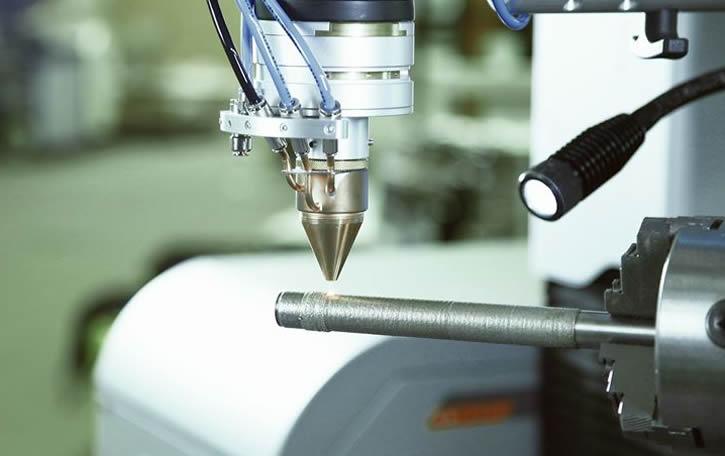 The thing about sensors is that they’re sensitive. Obviously, they need to be, as their name and purpose suggest, and generally, the more sensitive a sensor is, the more effective it is. Unfortunately, sensors often aren’t the most durable bits of equipment, and thus need to be frequently repaired or replaced, particularly in heavy industrial applications. But a new type of additive manufacturing technology developed by German company OR Lasertechnologie may be the solution to sensor stress, saving companies valuable time, money and materials.
The thing about sensors is that they’re sensitive. Obviously, they need to be, as their name and purpose suggest, and generally, the more sensitive a sensor is, the more effective it is. Unfortunately, sensors often aren’t the most durable bits of equipment, and thus need to be frequently repaired or replaced, particularly in heavy industrial applications. But a new type of additive manufacturing technology developed by German company OR Lasertechnologie may be the solution to sensor stress, saving companies valuable time, money and materials.
The 3D printing of sensors is a new and intriguing area of additive manufacturing, with nanotechnology and advanced 3D printing methods leading to breakthroughs such as microscopic sensors that can be printed directly onto components. OR Lasertechnologie’s research has led them to use 3D printing as a method not to create sensors, but to protect them.
As an example of the level of stress some industrial sensors are subject to, take a look at oil and gas pipelines. Every day, roughly one million barrels of crude oil are pumped through a single pipeline about one meter in diameter. That’s a lot of oil, and a lot of pressure, and the sensors used to monitor that pressure, along with temperatures and flow rates, are required to work extremely hard. The internal pressure, which can reach up to 100 bars in onshore pipelines and over 200 bars in offshore pipelines, leads to abrasion and corrosion of the sensors, making them wear out quickly.
A common method of protecting these sensors is coating them with Kennametal’s Stellite, a cobalt-chromium alloy designed to resist wear. The technique isn’t without its drawbacks, though – intense heat is produced when machining the substance onto the sensors, often causing the Stellite and the sensor material to melt together, resulting in a shorter lifespan for the sensor yet again. OR Lasertechnologie, however, believes that they’ve come up with a way to protectively coat the sensors without compromising them, courtesy of additive manufacturing.
 The system centers around a newly developed powder nozzle that allows OR Lasertechnologie to apply Stellite to sensors through direct metal deposition (DMD), using a low-powered laser to melt the Stellite onto the sensor with minimal melting of the sensor itself. The metallic powder is fed coaxially to the laser beam and fused with the surface of the sensor in a precise process that allows adhesion to take place only at a few scattered points on the sensor, rather than the entire surface – again, minimizing melting.
The system centers around a newly developed powder nozzle that allows OR Lasertechnologie to apply Stellite to sensors through direct metal deposition (DMD), using a low-powered laser to melt the Stellite onto the sensor with minimal melting of the sensor itself. The metallic powder is fed coaxially to the laser beam and fused with the surface of the sensor in a precise process that allows adhesion to take place only at a few scattered points on the sensor, rather than the entire surface – again, minimizing melting.
The procedure is carried out in an argon chamber to prevent oxidation and the formation of tiny bubbles in the material. The result is a sensor coated in a smooth, protective surface without cracks or pores, greatly extending the life of the sensor without affecting it adversely. It’s a much more flexible procedure, too – the coaxial configuration allows powder to be deposited regardless of the direction of the substrate’s movement, meaning that it can grow in any direction.
The technology was developed over the course of a year by OR Lasertechnologie’s research and development department, working together with the Fraunhofer Institute.
“We’re proud of having found a way to increase the durability of these sensors with our additive laser technique and thus improve the reliability of gas and oil pipelines,” said Markus Wolf, head of the R&D department at OR Lasertechnologie.
The nozzle is the first of its kind to combine wire- and powder-based laser cladding applications, making it 10 times more effective than prior cladding processes. It’s compatible with OR Lasertechnologie’s sophisticated EVO Mobile laser welding system and can be controlled with the company’s ORLAS SUITE software. Discuss further in the AM Technology to Solve Industrial Sensor Stress forum over at 3DPB.com.
Subscribe to Our Email Newsletter
Stay up-to-date on all the latest news from the 3D printing industry and receive information and offers from third party vendors.
You May Also Like
Gorilla Sports GE’s First 3D Printed Titanium Cast
How do you help a gorilla with a broken arm? Sounds like the start of a bad joke a zookeeper might tell, but it’s an actual dilemma recently faced by...
Nylon 3D Printed Parts Made More Functional with Coatings & Colors
Parts 3D printed from polyamide (PA, Nylon) 12 using powder bed fusion (PBF) are a mainstay in the additive manufacturing (AM) industry. While post-finishing processes have improved the porosity of...
$25M to Back Sintavia’s Largest Expansion of Metal 3D Printing Capacity Since 2019
Sintavia, the digital manufacturing company specializing in mission-critical parts for strategic sectors, announced a $25 million investment to increase its production capacity, the largest expansion to its operations since 2019....
Velo3D Initiates Public Offering in a Bid to Strengthen Financial Foundations and Drive Future Growth
Velo3D (NYSE: VLD) has been among a number of publicly traded 3D printing firms that have attempted to weather the current macroeconomic climate. After posting a challenging financial report for 2023,...

































